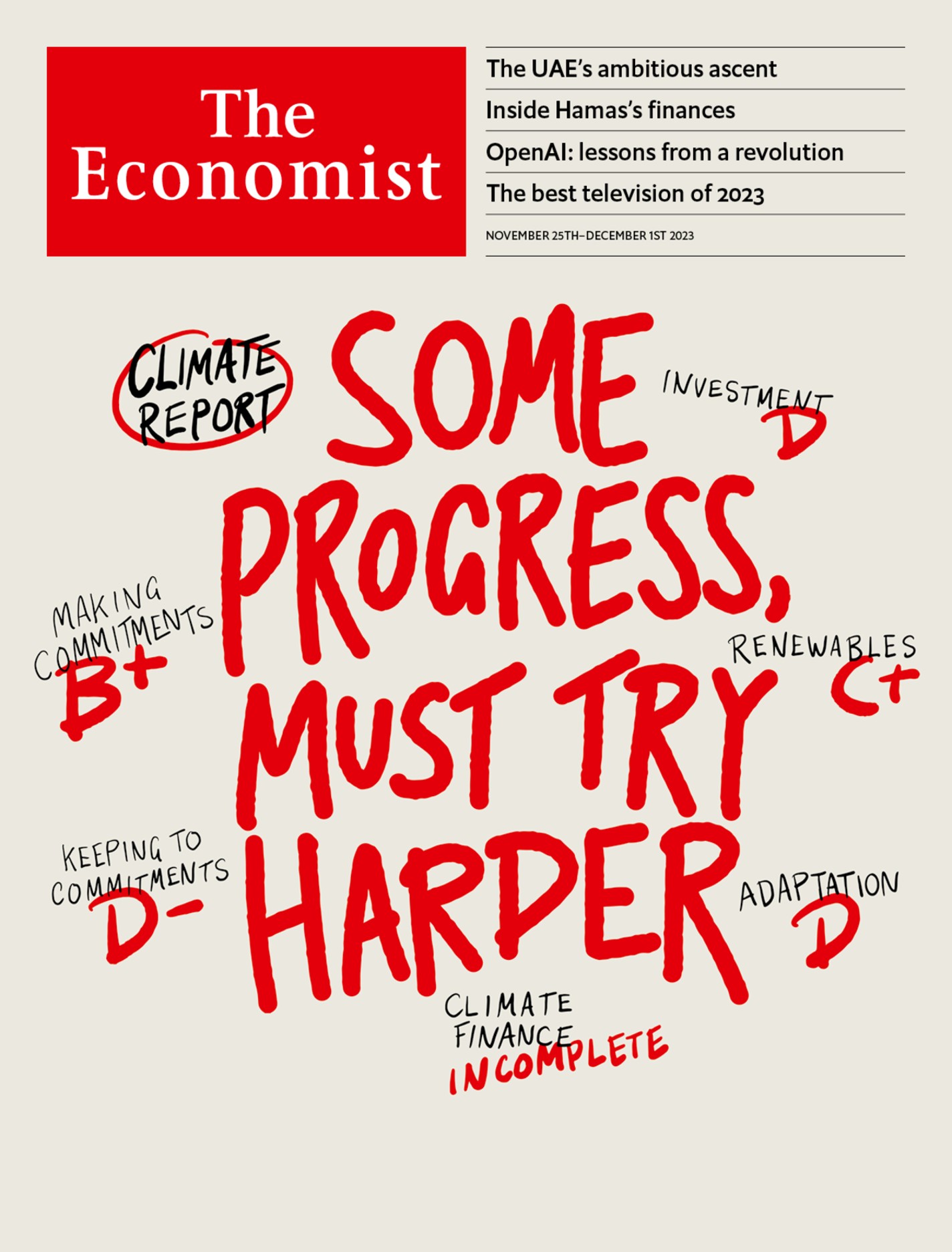A net-zero world needs new markets and institutions
It is just possible they will be built in time

The EARTH’s great cycles are mostly driven by the sun. Sunlight evaporates water to create rain, thus powering the water cycle; it heats the tropics more than the poles, thus driving the ocean’s gyres; it is used by plants and algae to turn carbon dioxide into wood and frond, food and fibre, mulch and decay, spinning the biological carbon cycle. Plate tectonics is the great exception, driven instead by the heat of the inner Earth.
Any anthropogenic addition to the roster of great recyclings will have to be driven, too, and the immediate motive force will be money. At the moment, the money driving durable carbon removals is coming mostly from investors willing to provide companies with the money needed to develop their technology and build their businesses and from rich firms and people willing to pay handsomely for the so far small amounts of removal on offer.
Over the past five years that money has spurred a boom in the sector, albeit from a base so low that even the boom is small. But in the medium term would-be carbon removers will find themselves moving beyond technological uncertainties—what methods are viable? how low can costs for different methods get?—to more fundamental ones. Where is the demand? Who will actually be willing, or required, to buy their services, and for how much?
Some governments are helping. By far the most generous is America’s, offering a $180-a-tonne tax credit for direct-air-capture projects under way by the end of 2032; there is also support for carbon-storage hubs and a small programme for buying removals directly. But “tax credits are not a long-term policy for the level of CDR deployment we’ll need to remove carbon dioxide from the atmosphere and meet our net-zero targets,” says Brad Crabtree, the assistant secretary for fossil energy and carbon management at the Department of Energy. “There will need to be longer-term policies that reward those actions in the marketplace.”
The obvious marketplaces are those of cap-and-trade systems. The inclusion of removals in such markets would mean that emitters could mix allowances issued under the scheme and credits for durable CDR when working off their carbon debt. Net zero would be the point where permits were no longer issued, and removals did all the work.
An obligation to the future
Some emissions-trading schemes (ETS) are open to the idea of allowing carbon-removal credits. But the political economy is treacherous. For such schemes to work in terms of net emissions, any credits added to the allowances must have a real effect on what is in the atmosphere. For schemes to be palatable to the industries operating under them, the credits need to be cheap and plentiful, which experience suggests means dodgy. Thomas Gresham, a 16th-century merchant, held that bad money drives out good. The same would prove true of carbon credits.
The European Union, which has the most advanced ETS, currently allows no outside credits into its workings. It has said that by 2026 it will have reached a position on integrating removals into the scheme; first, it is concentrating its efforts on an official carbon-removal certification scheme. The California ETS allows companies to meet a small portion of their obligation with officially sanctioned offsets that are overwhelmingly based on storing carbon in forests. The South Korean ETS and the Colombian carbon tax have similar provisions.
If well monitored, these provisions may bring in some reputable “nature-based” schemes that make use of forestry, coastal mangroves and the like. But the price of the allowances in cap-and-trade markets looks far too low to cover more durable forms of CDR. Hence the attraction of creating a separate mechanism for removals, at least as an interim measure.
One option is a reverse auction: the government sets a target for removals and awards contracts for the companies with the cheapest bids. Sweden is taking this route for bioenergy with carbon capture and storage; Britain is thinking about auctions with a “contract for difference” mechanism like the one it uses to encourage offshore wind and nuclear power: the government would pay not for the whole removal, but for the difference between the price of the removal and the carbon price.
Such an auction system could, in time, develop into a market for removals that operated in parallel with a market for emissions. Companies in some sectors would be required to buy removals to cover a fraction of their emissions. One version of this, championed by Myles Allen of Oxford University and his colleagues, would be a “carbon take-back obligation” under which the fossil-fuel industry would be required to cover an increasing fraction of its production with an equivalent amount of removals. When the fraction reached 100%—perhaps in 2050—the industry would be carbon-neutral. Such a predictable long-term increase in demand would motivate innovation.
The problem is trust. Could governments be relied on to ratchet up the obligation to buy removals? The fossil-fuel industry has a record of being duplicitous and unreliable when it comes to emissions reduction; its sheer size makes it a big influence on governments and its well-oiled lobbying operations amplify that. It is disturbingly easy to imagine the fossil-fuel industry contriving to have its removal obligations frozen at a fairly low level while continuing to make possible a lot of emissions.
That makes the case for institutions which build trust. Ottmar Edenhofer, a German economist, and colleagues have suggested that the EU might create a central bank for carbon to supervise the use of removals, preventing politicians from debasing the currency or breaking commitments. Most of the EU’s members have surrendered monetary policy to an independent bank. Perhaps they could do the same for carbon policy. But what other states, or groups of states, might do the same?
The Earth, isolated and ancient, recycles everything. It also brings forth novelties, such as apes ingenious enough to replumb fundamental flows of matter and energy at the level of the planet itself. It is strange to imagine institutions based on agreement and trust acting on a similar giga-scale. But the energy transition is showing that such things can be done, albeit too slowly and too late. If that transition continues in the way it needs to, the experience and planetary perspective gained could be the basis for concerted efforts to fix the remaining leaks in the carbon cycle. ■
This article appeared in the Special report section of the print edition under the headline "Making new markets"

From the November 25th 2023 edition
Discover stories from this section and more in the list of contents
Explore the edition